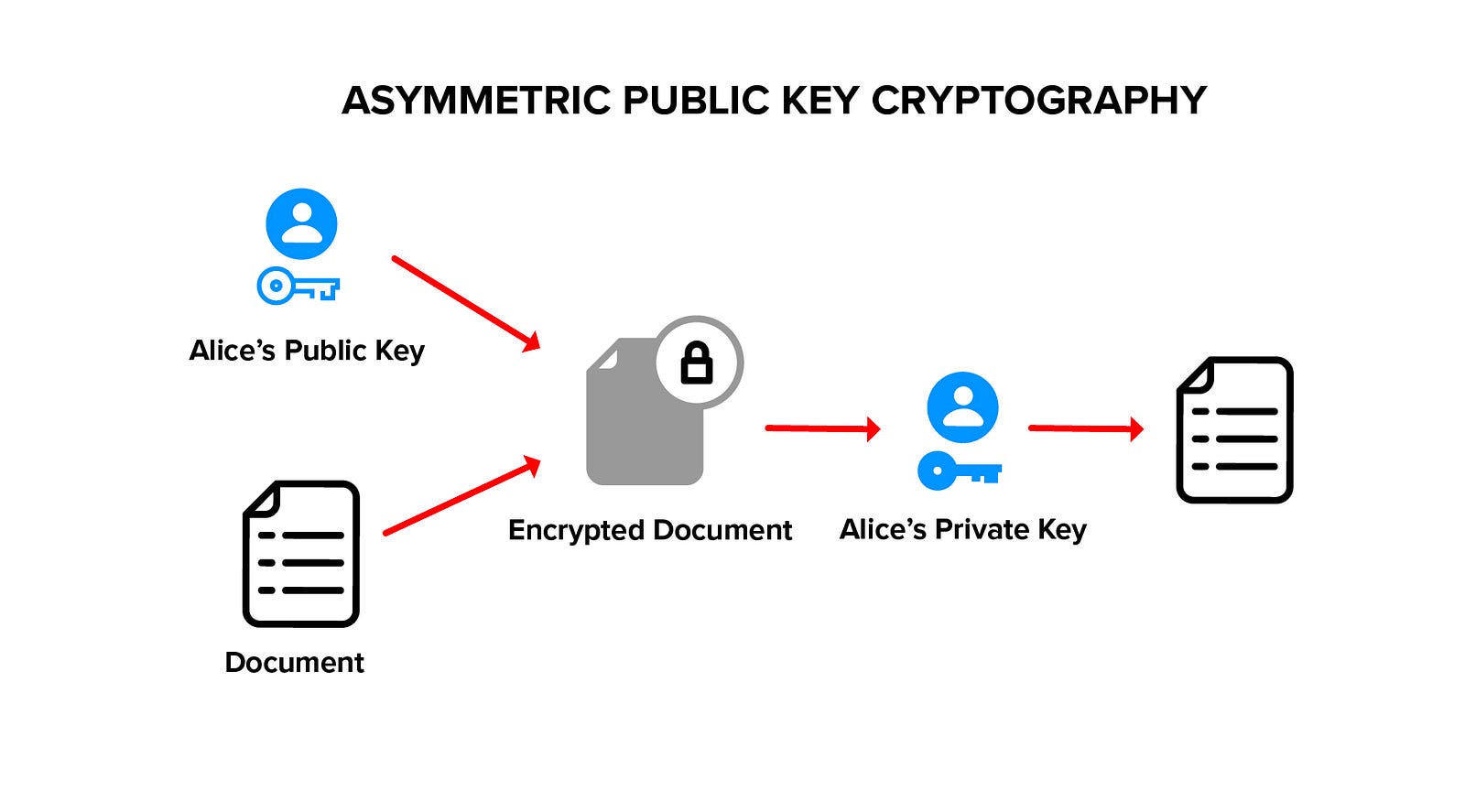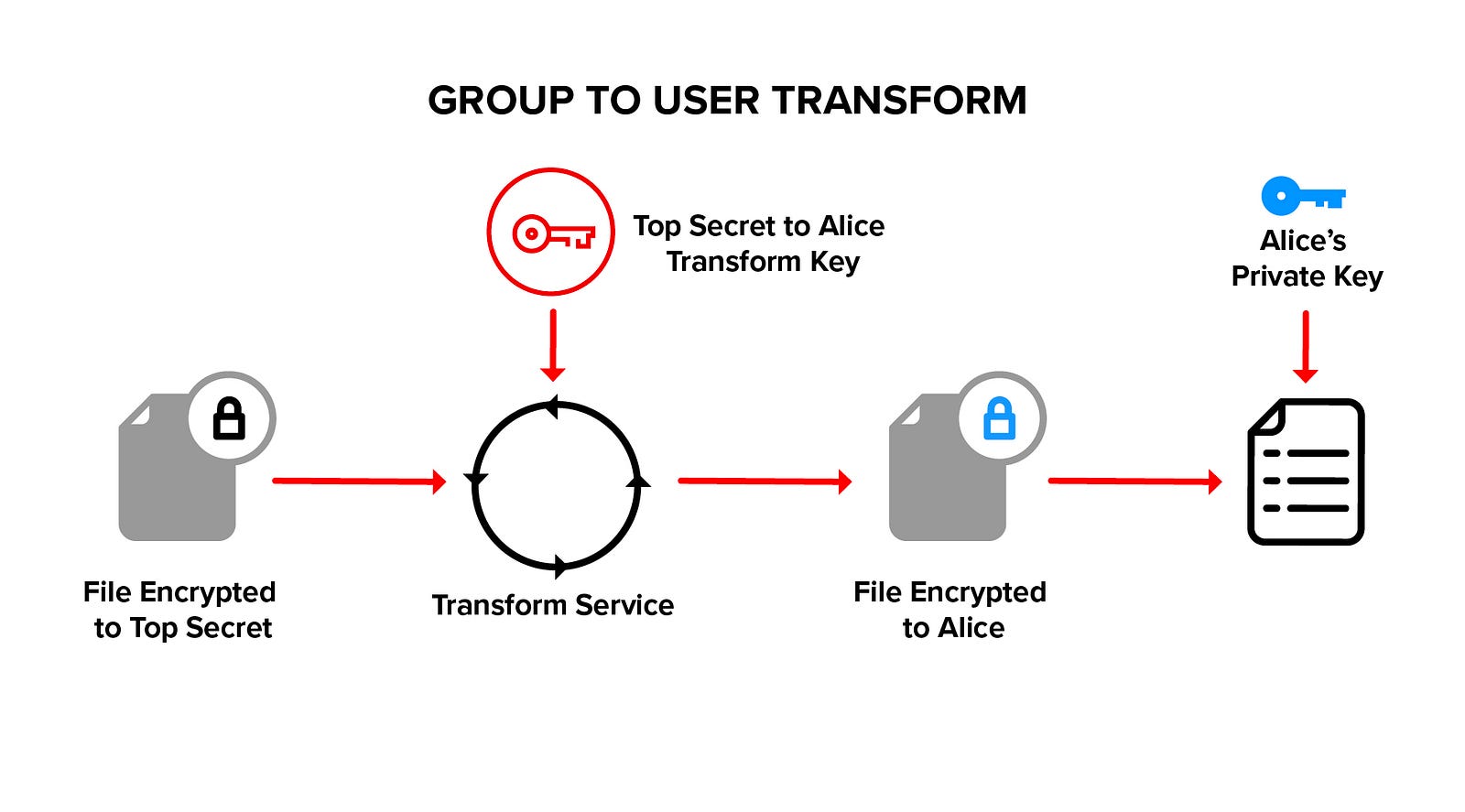Policy-Based Client-Side Encryption in Angular
While it isn’t necessary to understand how cryptographically-backed, orthogonal access control works in order to effectively use it, many developers like to know. Let’s explore that below.
How it Works
Encryption is the process of encoding data, making it unintelligible to anyone but the intended recipient(s). In this section, we’re going to explore three types of encryption: symmetric encryption, asymmetric encryption, and transform encryption.
In the descriptions below, we use the terms plaintext and ciphertext.
Plaintext is the original data that someone wants to secure so it cannot be accessed by anyone but the intended recipients.
Ciphertext is the scrambled result produced when the encryption process is applied to the plaintext.
A good encryption algorithm produces ciphertexts that look like random data and requires a lot of work to recover the plaintext by anyone that is not authorized. This process of recovering the original plaintext from a ciphertext is called decryption
Most encryption algorithms use a key as part of the encryption/decryption process. Possession of the key that is correct for a particular ciphertext serves as a person’s authorization to access the plaintext that produced that ciphertext.
Symmetric Encryption
Symmetric encryption uses the same key for both encryption and decryption. It’s fast and relatively simple, but users must find a way to securely share the key, since it is used for both encryption and decryption.
Asymmetric Encryption
Asymmetric encryption uses two keys that are mathematically related, generally called a key pair. The plaintext is encrypted with the public key, and the ciphertext is decrypted using the corresponding private key. Asymmetric encryption is also known as public key encryption because the encryption key can be shared publicly, while the decryption key must be kept private.
If data is encrypted to multiple users, it must be separately encrypted with each user’s public key. To revoke user access, we must possess and change the underlying data (and all its copies).


Transform Encryption
Transform encryption uses two asymmetric key pairs (one for a group and one for a member of the group) and a special transform key derived from these key pairs. Transform encryption is used to create cryptographically-backed, access control groups.
Plaintext is encrypted using a group public key, this is standard public key cryptography.


Ciphertext is transformed from group ciphertext to member ciphertext, using a transform key. Ciphertext is never decrypted during a transform, allowing the transform to be performed by a blind service.
The transformed member ciphertext is decrypted with the member private key on the member’s local client device. The private decryption key does not leave the member’s device.
The service provides a natural place to audit access since a transform is required to decrypt data. The service also provides a natural point of revocation because a transform key is required for member access.


Only group administrators can generate a transform key, which is derived from the group private key and the member public key. By generating and deleting transform keys, group administrators are able to add and remove members of the group. These operations may be performed without the need to change or even to possess the underlying data.


Group administrators cannot decrypt data encrypted to the group. This property of being able to administer groups but not decrypt the underlying data is implemented cryptographically with a key augmentation algorithm. See the ACM paper Cryptographically Enforced Orthogonal Access Control for details.
The transformation process does not require (or allow) the transform service to decrypt the ciphertext while transforming it. This allows transforms to be done by a semi-trusted service. The service never gains access to the plaintext and cannot get any information about the private key of either the group or the member.
An important property of transform encryption is that data can be encrypted to a group without knowing who is in the group or who will be added or removed. For example, we can encrypt our medical records and decide later what hospital can access them. When we check out of the hospital, we can remove access. The ability to decide later and change our mind makes transform encryption ideal for protecting data in the cloud, where data is often shared with a large or dynamic set of users.
There are only two hard things in Computer Science: cache invalidation and naming things.
— Phil Karlton
In the academic literature, transform encryption is called Proxy Re-Encryption (PRE). We do not use that term because in other contexts re-encryption implies an encrypt — decrypt — encrypt cycle, which we are not doing here. We use the term transform encryption to emphasize that the service transforms group ciphertext to member ciphertext, without the need for an intermediate decryption step.
Envelope Encryption
In the sections above, we simplified our description by assuming that a single type of encryption was applied to the entire data stream. In practice, public key cryptography almost always uses a symmetric inner key, called a document encryption key (DEK), to encrypt the data.
In the encryption process, a random AES key is generated as the document encryption key (DEK). The data is encrypted with this key.
